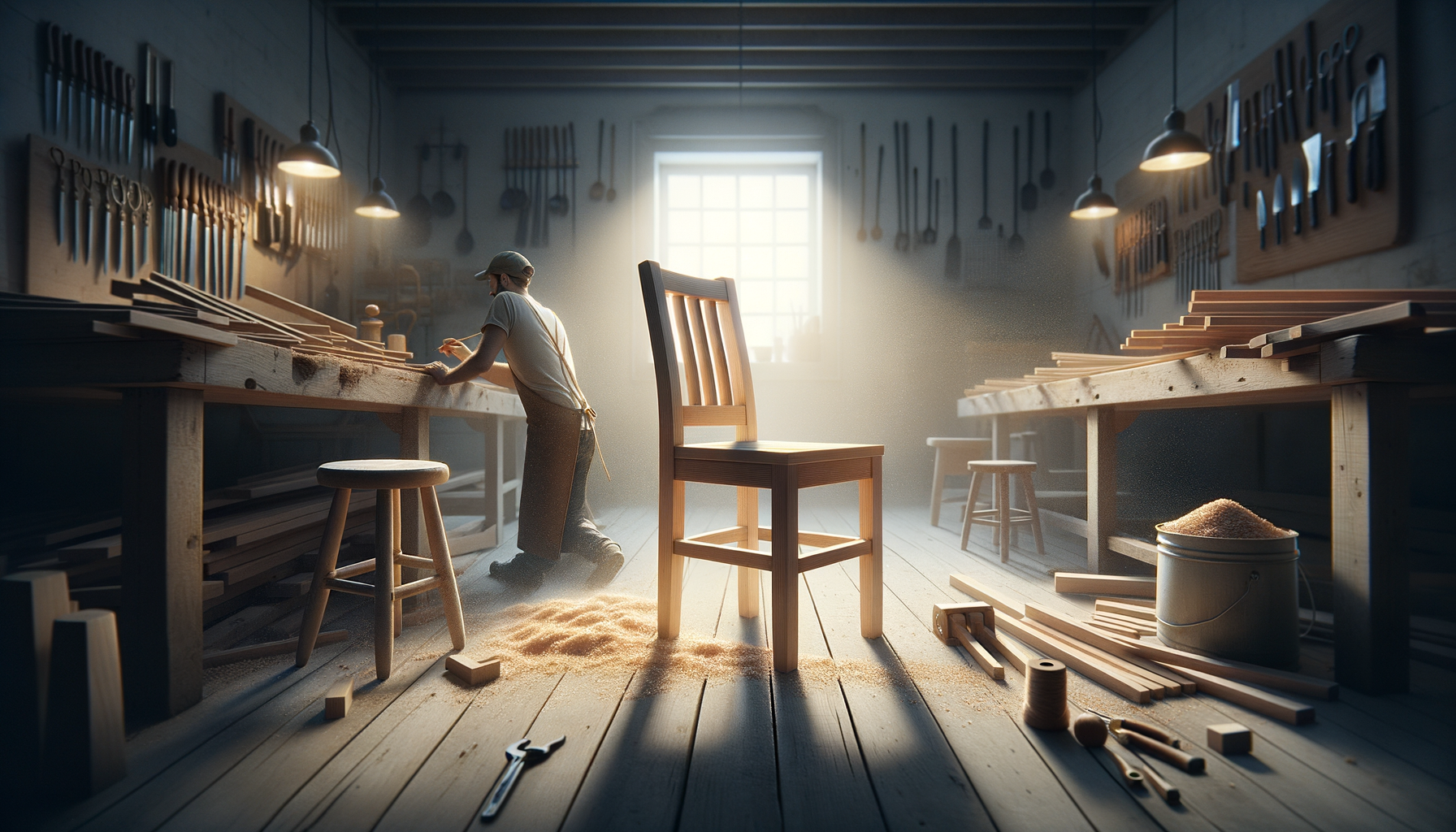We all have that one thing – that peculiar little obsession we secretly believe could be our prize-winning category on some bougie dating show. For some, it’s an encyclopedic knowledge of obscure craft beers. For others, it’s curating a vinyl collection so extensive that even Questlove would be impressed. For me? It’s furniture. Specifically, mid-century modern furniture—and no, I’m not just a guy who fawns over the occasional Eames lounge chair on Instagram. I’m talking about full-on obsession: quietly stalking estate sales, memorizing the biographies of Danish designers like they’re my cousins, and once, memorably, moving an 8-foot rosewood credenza up five flights of stairs in the rain. Let’s unpack (pun semi-intended) a few lessons I’ve gleaned from this passion—and how they might just fit into the bigger picture of building connection and cultivating relationships.
Why Furniture?
Some people fall in love with people. I fall in love with chairs. That might sound hyperbolic, but let me explain: furniture is intimate. A chair isn’t just a place you sit. It’s the quiet witness to late-night conversations, lazy Sunday mornings, and the occasional melodramatic breakdown. A well-designed piece of furniture goes beyond function—there’s an emotional resonance in something thoughtful, built to last, and, ideally, outrageously beautiful.
Growing up in Brooklyn Heights, surrounded by my parents' eclectic mix of inherited antiques, contemporary art, and, okay, a slightly alarming collection of Hummels my grandmother shipped over from Germany, I was fascinated by the function of objects in our daily lives. But it wasn’t until college—when I walked into a professor’s home and saw a perfectly preserved Arne Jacobsen Egg Chair framed by wall-to-wall bookshelves—that lightning struck. Minimalist elegance defined by detail! A chair that screamed "I’m both approachable and out of your league!” Slowly but surely, home decor became an obsession, and somewhere between browsing design blogs and making Machiavellian Craigslist negotiations, I started to notice the parallels between furniture and relationships.
Lesson One: Connection Requires Craft
One of my favorite pieces is a Finn Juhl sofa I acquired after years of (let’s call it what it is) shameless stalking. It’s timeless, yes, but what makes it extraordinary is the craftsmanship: hand-carved teak arms seamlessly paired with buttery leather upholstery. It’s not built for mass consumption.
Relationships—and love in all its forms—are no different. In an era where swiping has made meeting people feel about as personal as skipping commercials on Netflix, the importance of craftsmanship in connection can’t be overstated. Partnerships—romantic or otherwise—aren’t something you just “fall into” (believe me, that’s what happens when your cousin drops an IKEA sofa on you during assembly). Instead, real connection builds itself through effort: intentional listening, building trust, and—brace yourself—actually showing up.
So maybe take an intentional approach to your relationships. Forget convenience and aesthetics at first glance. Ask yourself: are we built for longevity? Am I investing in someone’s nuances the way a master craftsman would study how to carve a curve into a piece of raw wood? If the answer is yes, then congratulations: you’re building something meaningful. If it’s no, maybe it’s time to Marie Kondo that situation.
Lesson Two: Imperfections Make Things Real
Speaking of Marie Kondo-ing, let me tell you about one of my earlier heartbreaks: a 1960s coffee table that had been “restored.” I didn’t notice it at first, but someone had refinished it without understanding the original treatment of the wood. To the untrained eye, it was perfect—but for me, the soul of the piece was gone. There’s a parallel here, and it’s a qualm we all face in relationships: resisting the temptation to sand down the rough edges of our partners—or ourselves—to fit some artificial ideal of perfection.
Imperfections are what make stories worth telling. Do I cringe when I remember my first date with my ex, where I spilled hot coffee on my shirt five minutes in? Of course. But by date two, she greeted me with two travel mugs. Our differences and flaws were what clicked, not the highlight-reel versions of ourselves we each tried to present.
Furniture taught me this: the nicks, scratches, and quirks we acquire over time don’t diminish someone’s value—they’re signs of experience, survival, and individuality. Every scuff has a story, and finding beauty in that story is a gift.
Lesson Three: Form Follows Function
Here’s one for the Bauhaus purists: design should be inherently practical. That’s as true for an end table as it is in maintaining relationships. Flashy aesthetics mean nothing if the underlying structure can’t weather everyday challenges. A striking piece of furniture might steal the limelight in a living room, but if it wobble-wobbles every time you set a glass down, it’s not actually serving its purpose.
Likewise, when that one incredibly charismatic person from an art gallery uses flirtation like a fencing foil but can’t survive a single deep conversation without checking their phone? You know it’s not built to last. Relationships, at their core, need practical foundations: mutual respect, shared interests (and some differing ones to keep it interesting), and a commitment to holding each other steady through life’s inherent wobbliness.
Lesson Four: Tastes Change…and That’s Okay
I once owned a neon-green 1970s plastic lamp that, at one point, I proudly described as “a crucial postmodern accent in my otherwise mid-century collection.” In case it’s not clear, I was lying to myself. I was also about 22. As I’ve matured, so have my tastes—and while I never want my sense of style to feel “finished,” I’m no longer trying to imitate a Wes Anderson film in real life.
Our relationships work the same way: evolving with time is necessary (read: inevitable) if you want to build a life with someone. The person you are at 25 isn’t the same person you’ll be at 45. The key is figuring out whether your core values remain complementary even as your individual tastes shift. That’s what keeps furniture—or love—iconic.
Closing Thoughts: Take a Seat
When I think about furnishing my life, the joy comes not just in curating individual items but in the way they fit together to create a space that feels like me—a little cosmopolitan, a little nostalgic, and occasionally impulsive when it comes to buying a $600 lamp on a “gut feeling.” Likewise, relationships aren’t about finding someone perfect to stand alone in isolation. They’re about figuring out how your pieces align and how they complement each other to build a home, a community, or, simply, a life worth living.
So, here’s my advice to you: lean into your passions, however bizarre they may seem. In a world that often mistakes “quirky” for “weird,” owning what makes you you is the boldest thing you can do. Whether it’s chairs, croissants, or collecting rare action-figure collectibles (you do you!), these obsessions can teach you just as much about connection as any self-help book or cliché dating coach ever could. Besides, when you love something enough to wake up at 6 a.m. for a flash sale, the right person just might meet you halfway—with coffee and a van big enough to carry it home.




















